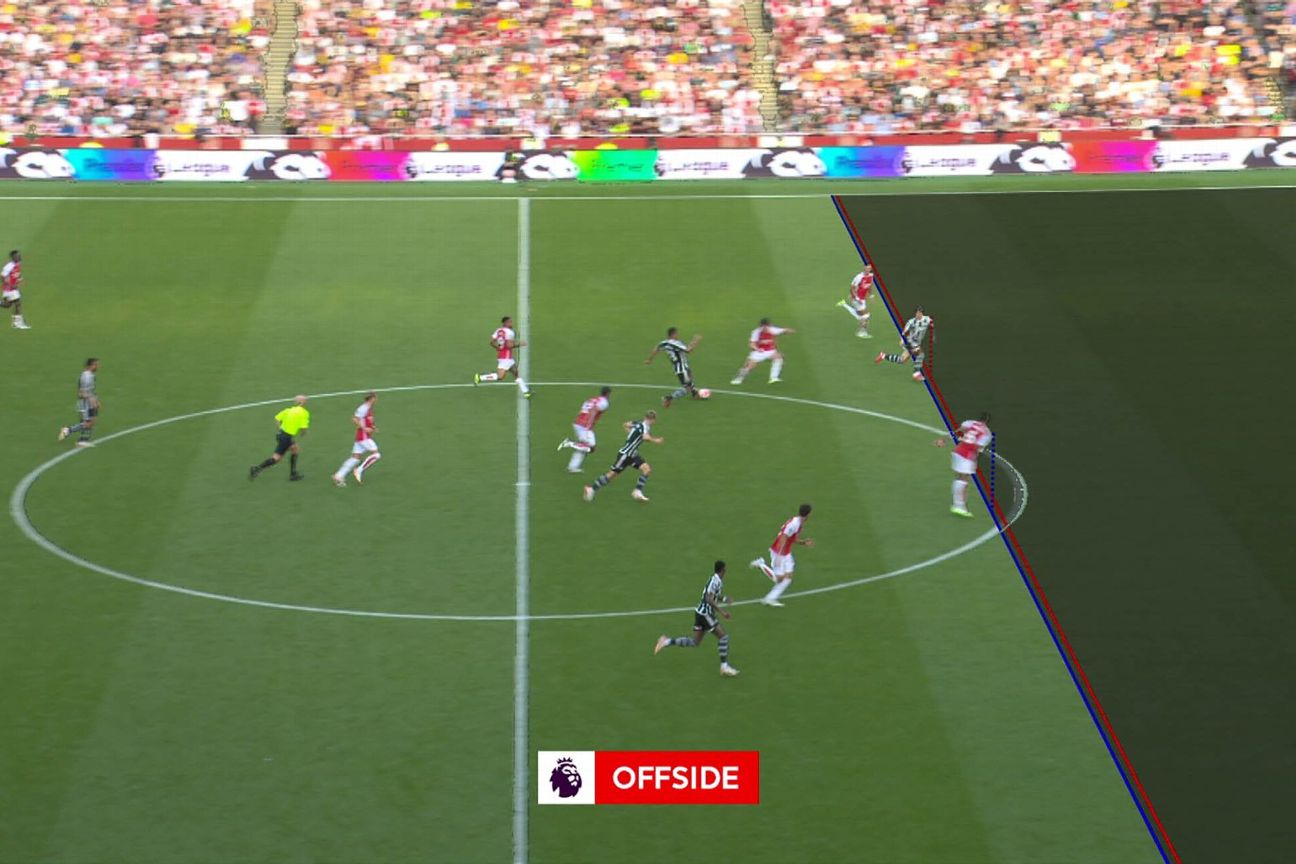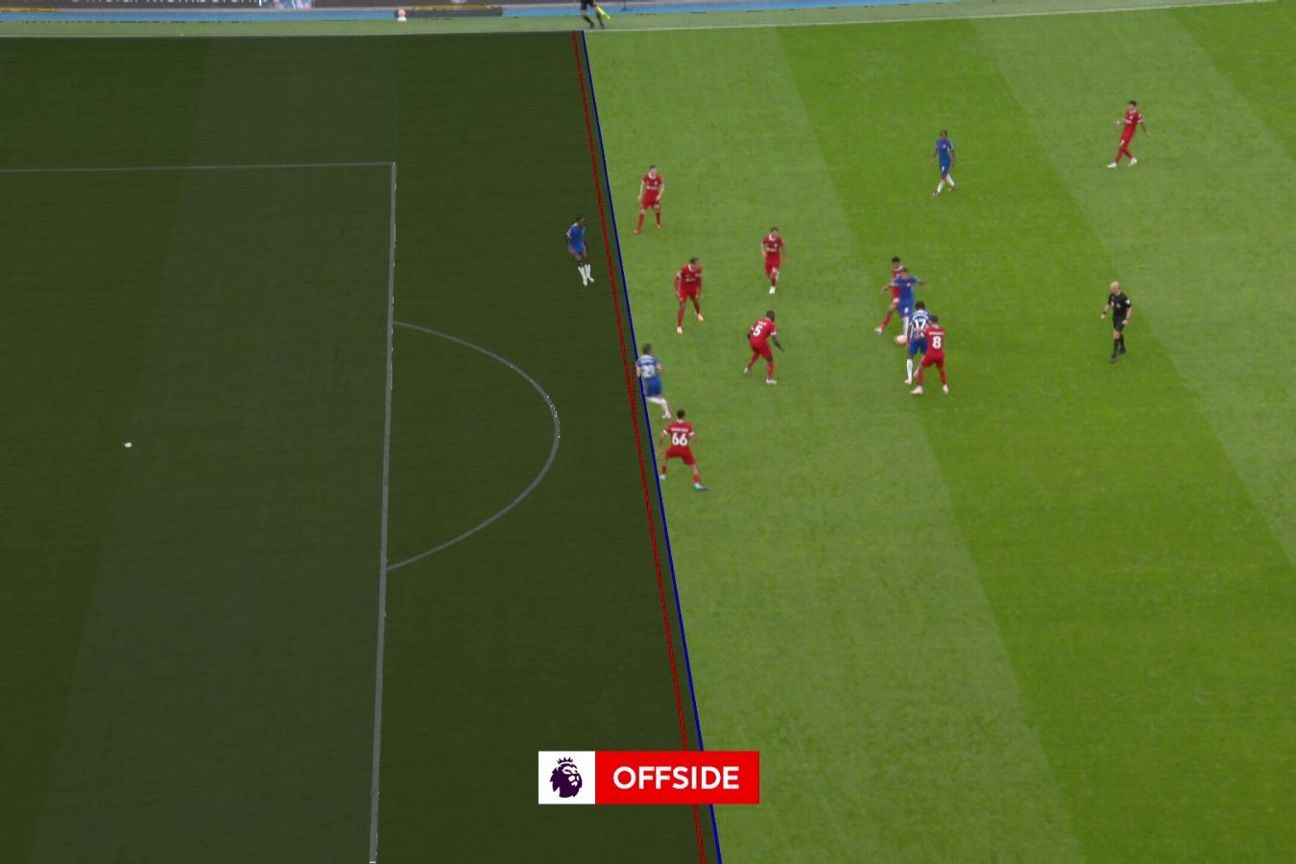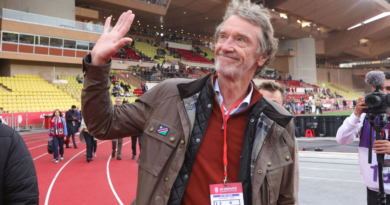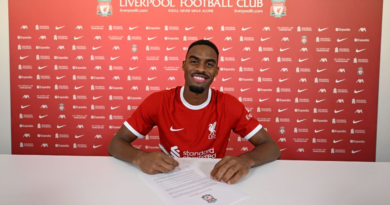The VAR Review: Havertz penalty cancelled, Ten Hag rant, Akanji offside
Video Assistant Referee causes controversy every week in the Premier League, but how are decisions made, and are they correct?
After each weekend, we take a look at the major incidents to examine and explain the process both in terms of VAR protocol and the Laws of the Game.
– How VAR decisions have affected every Prem club in 2023-24
– VAR in the Premier League: Ultimate guide
In this week’s VAR Review: Was it the correct decision to cancel Arsenal‘s penalty against Manchester United? And did Erik ten Hag really have any grounds for his complaints at other decisions? Plus, how the VAR got it very wrong to allow Manchester City‘s second goal vs. Fulham, and the rest of the big incidents.
Possible penalty overturn: Wan-Bissaka challenge on Havertz
What happened: Kai Havertz ran into the box in the 60th minute and was challenged by both Aaron Wan-Bissaka and Casemiro. The Arsenal forward went to ground, with referee Anthony Taylor pointing to the spot. The VAR, Jarred Gillett, began a check on the penalty.
VAR decision: Penalty cancelled.
VAR review: We regularly discuss how a VAR won’t overturn a penalty if it’s been given for lower body contact that is also evident in the replays, so what makes this decision different to others recently? Specifically, Dominik Szoboszlai against AFC Bournemouth and Marcus Rashford vs. Nottingham Forest?
It comes down to specifics of the protocol — most importantly how the referee has described his decision to the VAR.
In the case of Szoboszlai (foot) and Rashford (thigh) the referee will have seen the nature of the contact correctly; even if the award on the field of play was soft it won’t be overturned.
There are two key differences with the Havertz penalty overturn. Firstly, Taylor gave the spot kick because he believed Wan-Bissaka had tripped Havertz when he placed his right foot — but there was no contact with the Arsenal player at this point. Thus, Taylor hadn’t described the contact correctly, and it opens the door for a review.
There was contact after this, but it was judged that Havertz had initiated that by moving his left leg into Wan-Bissaka. The replay from behind the incident shows that Havertz did appear to move his foot off its natural line and into his opponent.
At no point does a challenge by Wan-Bissaka cause a foul, and when Taylor was shown the rear view at the monitor it was a quick decision to cancel the penalty.
With such a high bar for intervention in the Premier League, especially with the past examples of Szoboszlai and Rashford, it’s understandable that fans might be confused why this incident reaches the threshold for an intervention. It’s another example of how being able to hear the conversation between the referee and the VAR would clear up any confusion. Until FIFA changes shifts position, no league is able to do this live.
Possible offside: Garnacho when scoring
What happened: Alejandro Garnacho thought he had put Man United 2-1 up in the 88th minute when he latched onto a through-ball from Casemiro and calmly slotted past Aaron Ramsdale. But was the striker onside or offside?
VAR decision: Offside, goal disallowed.
VAR review: This is like going back to 2019, with a manager claiming the wrong angle had been used to decide an offside. It’s worked, of course, because social media is full of Man United fans repeating that same line.

Without going over well-trodden ground about how VAR offside works, the technology literally exists to compensate for the camera not being directly in line with the players.
It appears Ten Hag felt the higher tactical camera, which isn’t calibrated for the offside tech at any ground, should have been used — yet even to the naked eye Garnacho looks offside on this angle too.
In VAR terms, it wasn’t even a particularly close one. The tolerance level, which takes into account possible inconsistencies with the kick point and the plotting of players, is used when the two offside lines touch — effectively giving the benefit of the doubt to the attacker. There is a very clear gap between the offside lines, so any suggestion Garnacho was onside is clutching at straws.
The distance of the offside decision is similar to Ben Chilwell when he thought he had scored for Chelsea against Liverpool on the opening weekend of the season, and there was little said about this decision.

Possible penalty: Gabriel challenge on Højlund
What happened: Rasmus Højlund moved into the area in the 87th minute, and tried to take the ball past Gabriel. Both players went to ground, but referee Taylor waved away appeals for a penalty.
VAR decision: No penalty.
VAR review: This was the second of three decisions which Ten Hag was furious about — and again there was little grounds for complaint.
While Gabriel did put his arm across Højlund, the Manchester United striker was also holding onto his opponent too.
If this had been given by the referee it’s one thing, but there was nowhere near enough in it for the VAR to become involved.
Possible foul: Gabriel on Evans before Rice scored
What happened: Declan Rice gave Arsenal the lead six minutes into added time when his deflected shot beat André Onana. The VAR checked for a possible foul inside the area before the England international was able to get his shot in.
VAR decision: Goal stands.
VAR review: It’s difficult to see what Ten Hag was even claiming for here. Jonny Evans and Gabriel are holding onto each other, and while the Man United defender claimed the foul there’s nothing in the replays to suggest he was at all impeded by Gabriel anymore than he was doing himself.
There’s no chance whatsoever this goal would be ruled out.
Possible offside: Akanji on Ake goal
What happened: Manchester City went 2-1 up in the fifth minute of added time at the end of the first half when Nathan Aké headed home Phil Foden‘s corner. The ball went past an apparently offside Manuel Akanji on its way in but the goal stood. The VAR, Tony Harrington, began a check.
VAR decision: Goal stands.
VAR review: We’ve had the foul by Man United goalkeeper Onana on Wolverhampton Wanderers striker Sasa Kalajdzic in week one, and Alexis Mac Allister‘s red card for Liverpool against Bournemouth in week two. This will without doubt be the third missed VAR intervention of the season — and in many ways it’s the worst one. But even though the score was 1-1 at the time, this incident won’t get the same attention because City went on to win 5-1.
All three of those decisions are subjective, but the Akanji incident ticks every single box for an offside offence and it’s difficult to understand how the goal was allowed to stand.
It’s a textbook example of a player “making an obvious action which clearly impacts on the ability of an opponent to play the ball.” In fact you can take your pick, because if you think Akanji was trying to play the ball rather than evade it he would be “clearly attempting to play a ball which is close when this action impacts on an opponent.”
As Ake’s header goes towards goal, Akanji makes a movement which effectively allows the ball to go into the goal. He is directly in the path of the ball for Bernd Leno‘s decision-making process. The VAR even has a clue, as the Fulham goalkeeper hesitates just as the ball passes Akanji — but he shouldn’t even need that to identify this as a clear offside. Moving out of the way of the direct path of the ball has to have an impact on the goalkeeper.
This isn’t about any high bar in the Premier League. it’s just an awful decision. But it’s quite surprising from Harrington, as he has only previously made one mistake as VAR (according to the Independent Key Match Incidents Panel.)
The issue for refs’ chief Howard Webb is these mistakes completely undermine the work that is being done behind the scenes to improve standards. Despite the public perception, the Onana and Mac Allister situations are the only logged VAR errors this season — but, like Akanji, they are egregious and the situations people remember. It feeds the narrative that things are getting worse rather than better.
PGMOL has a perception problem, and won’t change while these serious howlers keep happening.
Webb wants to bring in a team of dedicated VARs, but as we saw with Lee Mason and Mike Dean it’s not as simple as a retired referee being a good video referee. It will take time to find the right candidates who have the skills and the qualifications to move into the role full-time.
0:45
Why VAR was wrong to allow Man City’s 2nd vs. Fulham
Dale Johnson explains why VAR made the wrong call in allowing Nathan Ake’s goal to stand.
Back to the decision, simply being offside isn’t an offence, you do have to impact the goalkeeper — and Szoboszlai’s early goal for Liverpool against Aston Villa on Sunday provides the perfect comparison.
While Salah was in an offside position, he made no movement to play the ball. There was certainly a consideration that Salah was in the line of vision of Emiliano Martínez when Szoboszlai hit the shot, but as it came from distance it’s certainly not clear that the Egyptian has any impact on the goalkeeper’s ability to make the save.
While Akanji moves out of the path of the ball to allow it to pass into the net, Salah stands still and has no influence in that same way. It would have been a very harsh decision to rule it out, and certainly not one VAR would make a call on.
We have seen an example this season of a decision which should have been offside on the field, but wasn’t enough for a VAR intervention. It came with the goal Wolves scored against Brighton & Hove Albion, when Hwang Hee-Chan netted in the 61st minute. An offside Craig Dawson stuck out a leg as the ball went through, but Hwang’s shot went across the face of goal into the opposite corner. While Dawson may have impacted Jason Steele there was enough doubt for the decision to stay on-field.
Possible penalty overturn: Diop foul on Alvarez
What happened: Issa Diop brought down Julián Álvarez inside the area in the 68th minute, and referee Michael Oliver pointed to the spot. But should it have been overturned?
VAR decision: Penalty stands, scored by Erling Haaland.
VAR review: Diop has both hands on the back of Álvarez as he’s moving forward, causing the striker to be bundled to the ground. Oliver had the perfect view behind the incident and if he described it correctly, there’s no chance the VAR will become involved to overturn the spot kick.
There was a case for a second yellow card for Diop, but giving away a penalty doesn’t mean a player has to get another card.
Possible penalty: Handball by Ward Prowse
What happened: Luton Town won a corner in the fourth minute of added time, in search of an equaliser. Mads Andersen and Nayef Aguerd jumped for the ball, but both players missed it. The ball continued on its path and hit the arm of James Ward-Prowse, who was in the process of jumping. There was a shout for handball but referee Paul Tierney ignoring the appeals. The VAR, John Brooks, began a review for a penalty.
VAR decision: No penalty.
VAR review: If the first four weeks of the season have taught us one thing, it’s that the VAR is not going to get involved in handball unless it’s indisputably an offence.
We’ve had three decisions not given on the pitch, and the independent panel has agreed in all three cases: Arsenal‘s Rice vs. Nottingham Forest, Chelsea‘s Nicolas Jackson vs. Liverpool and Tottenham Hotspur‘s Cristian Romero vs. Man United.
Rice wasn’t given on expected position, Jackson due to a near-post flick header which took the ball into his arm, and Romero on proximity.
In Ward-Prowse’s case this again comes down to expected position for his arms when jumping to head the ball, though it could easily have been given on the field if seen. If his left arm had been in a raised position, pointing upwards, then the VAR would certainly have acted.
It will divide opinion, especially with handball being treated more strictly in Europe. It’s consistent with VAR interventions this season.
Everton wanted a penalty for handball against Sheffield United‘s Jack Robinson, a situation that came directly before the corner from which they scored. This again was a close call, and comparable with the Romero decision. It was judged he wasn’t making his body bigger in a way that wouldn’t be expected when blocking the ball. Again, if his arm was raised (as it was when Sheff United’s John Egan conceded a spot kick against Manchester City) it would have been a different judgement.
Possible penalty and red card: Ahmedhodzic foul on Danjuma
What happened: In the 49th minute, Arnaut Danjuma was pulled back by Anel Ahmedhodzic as he was about to enter the box. Referee Andy Madley gave a free kick, with the VAR, Simon Hooper, checked for a possible penalty and a red card for denying an obvious goal-scoring opportunity.
VAR decision: No penalty or red card.
VAR review: This was an exceptionally close call for Ahmedhodzic — did he release his hold on Danjuma before he reaches the line of the penalty area, or did it continue to that point? Unlike with a tackle, holding will still be a penalty if the offence goes on into the area.
The VAR has decided to stay with the on-field decision because he couldn’t be certain that the holding that was causing the foul was still present when Danjuma reached the box. With it being unclear either way, it’s likely the penalty would have stood if awarded by Madley.
There’s a case for a red card, too, but the referee’s yellow-card decision was acceptable with the possibility that the covering defender would have prevented Danjuma from getting a shot on goal.
Possible penalty: Gomes on Eze
What happened: Eberechi Eze attempted to skip past João Gomes inside the area in the 13th minute, there appeared to be some contact and the Crystal Palace forward went to ground. Referee Robert Jones ignored the appeals, which came mostly from the Palace supporters. The VAR, Stuart Attwell, began a check for a possibly penalty.
VAR decision: No penalty.
VAR review: While there might have been some contact by Gomes, Eze appears to go down too easily. In fact, he may already be on his way down at the point of the contact.
That said, there are similarities with the VAR penalty given to Tottenham at Brentford on the opening weekend (coincidentally Robert Jones was the referee for that game too), a decision that was right on the borderline of clear and obvious.
Some parts of this article include information provided by the Premier League and PGMOL.




